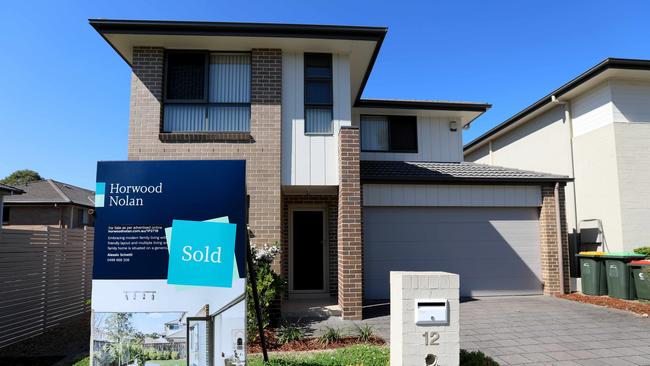
Perhaps they believed the banks this year when the lenders said house prices would fall by 10 per cent, or perhaps they worried that credit would never flow again or, most likely of all, they considered the scenario of a 7 per cent unemployment rate and thought it all too hard.
Well, times change. What’s more, economic cycles accelerate. Although they don’t move so fast that bank economists can be entirely forgiven for getting it so wrong on house prices.
Here’s the picture: house prices have fallen by a little over 2 per cent peak to trough. It looks very likely the bottom was struck in October. From here, we may be looking at good gains — ANZ Bank this week forecast 9 per cent increases in national house prices by the end of next year.
Still, most property investors find themselves watching the action from the sidelines: you have to go back to about 1997 when investor participation in the market was as low as it is now — at about 23 per cent, compared to twice that figure at the peak in 2016.
As Commonwealth Bank CEO Matt Comyn suggested this week, property investors will eventually come back. The question is should investors reconsider residential property now, and why have they held back to date?
This nascent rebound — and remember, there is only a few weeks of hard evidence on rising metropolitan house prices — is substantially different to past upswings because it is almost entirely driven by owner-occupiers.
In turn, those owner-occupiers are greatly supported by government incentives such as the HomeBuilder scheme.
When house prices are driven by owner-occupiers, certain aspects of the “market” get overlooked. Vacancy rates, rental yields, eviction prohibitions, oversupply of apartment towers … who cares about all that if you are buying a home to live in.
For the home buyer, it’s a perfect set of conditions: prices have been trimmed, interest rates are at record lows and the outlook is brightening.
The property investor, however, is looking at the market in a very different light. Of course, those rising prices are attractive, a strong capital return is the ultimate reward for the time, expense and fixed costs property requires.
But the majority of investors will want to borrow to enter the market and they need rental income to pay the mortgage that comes with the deal. Without the certainty of a rental income stream, no amount of tax incentives is going to make it all work.
Now, if you look deeper inside the weekly figures for the property market, the reality is that rentals — or rental yields — are actually falling in the major cities. Remember, rental yields were already very low, yet they are dropping further.
In city centre districts, the rental outlook is terrible: asking rents are down 20 per cent in Melbourne’s Docklands, down 18 per cent in Kingsford, Sydney, and down 6 per cent in South Brisbane.
Worse still, the amount of people renting — apartments and houses — is falling as we have an inadvertent block on immigration due to the COVID-19 pandemic and a trend of young renters chucking in their apartments and returning to the family home.
Again, this is not supposition: as ANZ economist Adelaide Timbrell suggests: “The level of rental bond refunds is outpacing the level of rental bond terminations.”
There are better trends showing outside Sydney and Melbourne, in cities such as Brisbane and Perth, but then those cities did not share the prosperous period of house price increases that the larger cities enjoyed in recent years.
In other words, if you can’t pay for a property outright, you are taking a bigger risk than usual in property investment because the rents are falling and the rental demand is weak.
Who’s up for paying an investment mortgage and all costs with diminishing rental income … or none at all?
What’s more, apartment prices are much weaker than houses — yet apartments are the entry level for most property investors.
Similarly, all those grants: the dizzying selection of federal and state home-buyer grants — and now the NSW stamp duty exemption — are all aimed at home buyers. None of these initiatives help in the operating costs faced by the property investor.
Will the investment picture get any better? “We don’t expect any more big falls in rental income,” says Timbrell at ANZ.
So is it time to go into the market? Absolutely, if you don’t need finance, you keep away from apartments and you can afford to maintain a house.
On the other hand, if you need finance, then you are most likely gambling more than usual on rental income.




It may have happened before, but it is highly unlikely: we have a rising property market and property investors are nowhere to be seen.